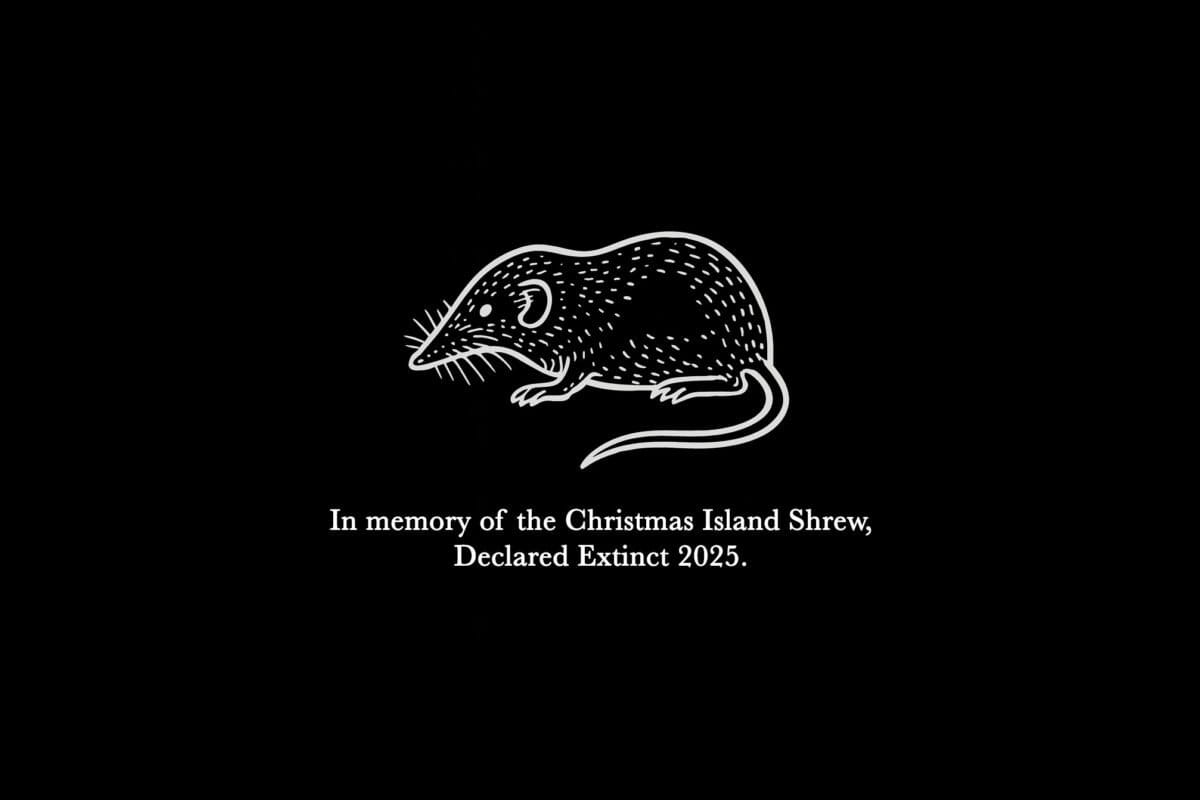Once abundant on Christmas Island, the tiny, five-gram shrew (Crocidura trichura) filled the night forest with its high, thin cry before vanishing into silence.Introduced black rats and their parasites decimated the island’s native mammals, and by 1908 the shrew was thought extinct, its memory confined to museum drawers and field notes.Brief rediscoveries in 1958 and 1984 brought fleeting hope, but the last known individuals died in captivity, and no others have been found despite decades of searching.Its loss, now made official, adds to Australia’s grim record of extinctions—a quiet reminder of fragile lives erased by invasion, neglect, and the noise of human expansion.
See All Key Ideas
It never weighed more than a spoonful of sugar. Five or six grams of life, soft-furred and sharp-nosed, darting among the roots and leaf litter of a tiny island in the Indian Ocean. At night, its voice—a thin, high cry, part bat and part whisper—once filled the forest of Christmas Island. Now the forest is silent. Australia’s only shrew, Crocidura trichura, has been declared extinct.
Few knew it lived, fewer still that it was Australian. The shrew was a stranger in a land of pouched mammals, a migrant that arrived tens of thousands of years ago, likely clinging to a raft of vegetation from what is now Indonesia. On this isolated outpost, it built a quiet lineage of survivors. When British naturalists arrived in the 1890s, they found the forest alive with its shrill chatter. “Extremely common,” they wrote. And then, almost at once, it vanished.
The black rats came first, stowaways in bales of hay. With them came a parasite, Trypanosoma lewisi, that swept through the island’s naïve mammals like a plague. Within years, both native rats were gone. By 1908, the shrew was presumed lost too. Its name lingered only in museum drawers and in the footnotes of field reports.
Yet it was not quite gone. Half a century later, in 1958, two shrews appeared as bulldozers tore into the forest for phosphate mining. They were seen, released, and forgotten. Then, in 1984, came a miracle: a live female, found in a clump of fern by biologists clearing a path. For more than a year, she lived in a terrarium, fed on grasshoppers and care. A few months later, a male was caught. The world briefly held its breath for a reunion that might save a species. But the male, sickly and short-tempered, died within weeks. The female lingered alone until she, too, was gone.
No others were ever found. Searches in the following decades brought only silence—the kind of silence that deepens until it becomes its own proof. When scientists dissected hundreds of feral cats on the island, not a trace of shrew remained in their stomachs. The Red List, in its latest revision, made official what many already knew in their hearts: Crocidura trichura was no more.
To some, the loss of a creature so small may seem inconsequential. Yet its passing adds one more mark to Australia’s lamentable record—the thirty-ninth mammal species lost since colonization, more than any other country on Earth. The shrew’s absence is a story repeated across islands: an ancient ecosystem undone by the carelessness of arrival, by rats and cats, ants and snakes, by the unthinking traffic of an expanding world.
The Christmas Island shrew had survived what many thought impossible. For decades, it persisted unseen—a shadow among roots, defying extinction. It was officially rediscovered, officially lost, and then, improbably, rediscovered again. It endured eighty years of disappearance before the recorders caught up. That endurance was its last act of defiance.
In life, it asked for little: a patch of soil, a few beetles, a quiet forest. In death, it leaves questions that are larger than itself. How many other lives flicker out unseen before the world even learns their names? How many others wait somewhere in the darkness, unseen but breathing still?
There is always a chance—slim but not zero—that the shrew endures yet, hidden in the damp heart of Christmas Island, trembling but alive. Hope, after all, has a long history of outliving the species it mourns. But the forest is quieter now. And if this really is the end, the last of Australia’s shrews will have gone as it lived—small, secret, and almost entirely unnoticed, save for those who loved it enough to listen for its cry.

